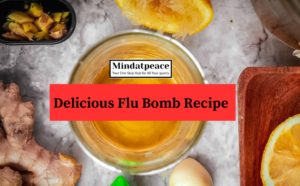Fermentation is an ancient culinary technique that has resurfaced in contemporary kitchens with a bang. Its fan base ranges from food aficionados, and health-conscious individuals, to sustainability enthusiasts. Thanks to part kitchen science, part creative expression, fermentation has evolved into an art form, producing a rich tapestry of flavors, textures, and aromas that are unmatched by any other cooking method. At the heart of this renaissance is the liquid culture recipe—a basic yet versatile fermenting agent that lays the foundation for countless delicious and nutritious concoctions.
The Allure of Fermentation
Humans have been fermenting food and beverages for millennia, with the practice believed to date back to at least 7000 BC. Throughout history, fermentation has preserved food, enhanced its digestibility, and expanded the palate. Today, it’s being revived for more reasons than just culinary exploration. The process is lauded for its potential health benefits, which include aiding digestion, boosting the immune system, and providing beneficial probiotics.
The liquid culture, also known as a starter culture, is crucial to the fermentation process. It’s the initial substrate of microorganisms that jump-start the fermentation, turning a simple liquid into a pint-sized powerhouse of flavor and health.
What is a Liquid Culture?
The term liquid culture might sound like something out of a microbiology lab, but it’s quite simple. A liquid culture is a mixture of nutrients that supports the growth and maintenance of a culture of microorganisms. It provides the ideal environment for bacteria and yeasts to thrive, leading to consistent, controlled fermentation.
Common liquid cultures are made from simple ingredients such as water, flour, and milk. However, you can get more creative by using ingredients like fruit juice, coconut water, or even leftover brine from a previous fermentation. This fermentation base is rich in the sugars and amino acids that microbial cultures love to feed on.
Key Ingredients of a Liquid Culture
Creating a liquid culture at home requires just a few key ingredients:
- Flour: Often wheat or rye, organic and unbleached flours are an ideal source of natural yeasts.
- Milk: Fresh or powdered milk serves as a nutrient-rich medium for lactic acid bacteria.
- Fruit Juices: Apple juice or grape juice can provide the sugars needed for fermentation.
- Water: Always use non-chlorinated water, as chlorine can inhibit microbial growth.
- Sugar: Honey, maple syrup, or raw cane sugar can help feed the culture.
Creating Your Own Liquid Culture
Crafting a liquid culture is a simple process, but patience is key. It may take a few days to get your culture to an active, bubbly state, ready for use in various fermented foods. Here’s a basic overview of creating a homemade liquid culture:
- Step 1: Choose Your Substrate
Select what you’ll use as your nutrient base. For beginners, flour and water can create a robust sourdough starter. More adventurous ferments could use fruit juice as a base.
- Step 2: Mix
Combine your chosen substrate with your primary culture ingredient, such as flour or water, in a clean glass jar. The mixture should be the consistency of pancake batter.
- Step 3: Wait and Feed
Leave the mixture in a warm, dark place, feeding it daily with fresh nutrients. For a flour-based culture, feed with more flour and water. For fruit juice, add a bit of sugar and more juice.
- Step 4: Observe and Use
After a few days, you should see bubbles and smell sour or yeasty aromas, indicating active fermentation. Your liquid culture is ready to use in recipes like sourdough bread, kombucha, or fermented fruits and vegetables.
The Versatility of Liquid Culture Recipes
Once you have a thriving liquid culture, the culinary world is your oyster. Here are a few popular liquid culture recipes to get you started.
Sourdough Bread
A tangy, chewy sourdough bread starts with a liquid culture of flour and water. Mix the culture with more flour and water, then allow the dough to rise and develop flavor overnight before baking to a perfect crusty golden brown.
Kombucha
For a refreshing, effervescent tea beverage, incorporate your liquid culture into freshly brewed sweetened tea. Let it ferment for a week or two at room temperature, then enjoy the tangy results.
Yogurt
To make your own creamy, probiotic-rich yogurt, mix a milk-based liquid culture with heated milk and allow to ferment at a warm temperature until thickened. Strain for Greek-style yogurt or use as is for a classic daily dose of beneficial bacteria.
Kimchi
Korean kimchi is a pungent and spicy fermented vegetable dish that usually starts with a liquid culture of rice flour, water, and sugar. Mixed with garlic, ginger, and chili powder, this liquid culture creates the perfect environment for the vegetables to ferment and develop complex savory flavors.
Safety and Sanitation
When dealing with live cultures, cleanliness is of paramount importance. Always use sanitized equipment, and follow proper hygiene practices to avoid cross-contamination.
Conclusion: Start Your Liquid Culture Adventure
Fermentation is a journey that can lead to a more connected, creative approach to cooking and eating. Liquid cultures provide an essential beginning to this voyage. As you experiment with different ferments, you’ll not only add unique flavors to your table but also partake in a practice that aligns with the slow food movement, promoting a sustainable way of life.
So, roll up your sleeves, gather your ingredients, and start cultivating your liquid culture. It may seem like a humble beginning, but the living microcosm you create will open the door to a world of culinary delights. Whether you’re an aspiring home cook, a seasoned chef, or simply someone looking to enhance your kitchen repertoire, embracing the liquid culture is a step toward a richer, more flavorful culinary experience.
Fermentation is not just about preserving the past, but about savoring the living present. Dive into the art of liquid culture and unlock the potential of this transformative culinary practice right in your own kitchen. Your taste buds—and maybe even your gut—will thank you.




